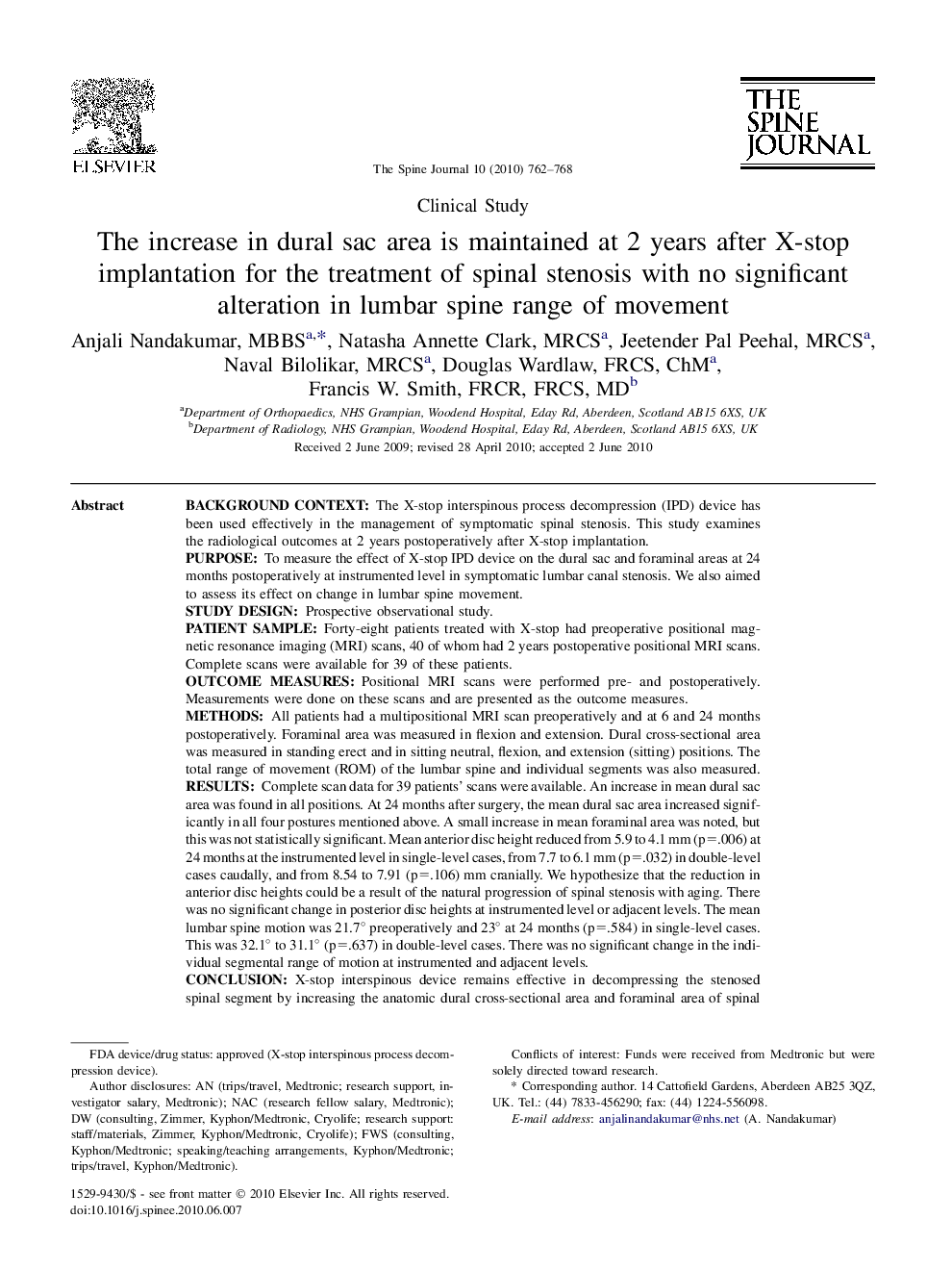| کد مقاله | کد نشریه | سال انتشار | مقاله انگلیسی | نسخه تمام متن |
|---|---|---|---|---|
| 4098509 | 1268616 | 2010 | 7 صفحه PDF | دانلود رایگان |

Background contextThe X-stop interspinous process decompression (IPD) device has been used effectively in the management of symptomatic spinal stenosis. This study examines the radiological outcomes at 2 years postoperatively after X-stop implantation.PurposeTo measure the effect of X-stop IPD device on the dural sac and foraminal areas at 24 months postoperatively at instrumented level in symptomatic lumbar canal stenosis. We also aimed to assess its effect on change in lumbar spine movement.Study designProspective observational study.Patient sampleForty-eight patients treated with X-stop had preoperative positional magnetic resonance imaging (MRI) scans, 40 of whom had 2 years postoperative positional MRI scans. Complete scans were available for 39 of these patients.Outcome measuresPositional MRI scans were performed pre- and postoperatively. Measurements were done on these scans and are presented as the outcome measures.MethodsAll patients had a multipositional MRI scan preoperatively and at 6 and 24 months postoperatively. Foraminal area was measured in flexion and extension. Dural cross-sectional area was measured in standing erect and in sitting neutral, flexion, and extension (sitting) positions. The total range of movement (ROM) of the lumbar spine and individual segments was also measured.ResultsComplete scan data for 39 patients' scans were available. An increase in mean dural sac area was found in all positions. At 24 months after surgery, the mean dural sac area increased significantly in all four postures mentioned above. A small increase in mean foraminal area was noted, but this was not statistically significant. Mean anterior disc height reduced from 5.9 to 4.1 mm (p=.006) at 24 months at the instrumented level in single-level cases, from 7.7 to 6.1 mm (p=.032) in double-level cases caudally, and from 8.54 to 7.91 (p=.106) mm cranially. We hypothesize that the reduction in anterior disc heights could be a result of the natural progression of spinal stenosis with aging. There was no significant change in posterior disc heights at instrumented level or adjacent levels. The mean lumbar spine motion was 21.7° preoperatively and 23° at 24 months (p=.584) in single-level cases. This was 32.1° to 31.1° (p=.637) in double-level cases. There was no significant change in the individual segmental range of motion at instrumented and adjacent levels.ConclusionX-stop interspinous device remains effective in decompressing the stenosed spinal segment by increasing the anatomic dural cross-sectional area and foraminal area of spinal canal. It does not significantly alter the ROM of lumbar spine at instrumented and adjacent levels at 24 months postoperatively.
Journal: The Spine Journal - Volume 10, Issue 9, September 2010, Pages 762–768